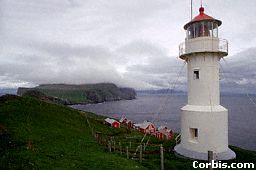| Group | Germanic (with German, English, Dutch etc.), North Germanic (with Norwegian, Icelandic etc.) |
| Geography | The Faroe Islands |
| History | Norwegian colonists who settled on the Faroe Isles appeared isolated from the rest of Europe: formally the islands belonged to Denmark, but in fact they have always lived quite independently. The first written documents in Faroese appeared in the early 17th century. Today it is officially spoken. |
| Phonetics | Several vowels turned into diphthongs. There are no voiced stops b, d, g, they are pronounced as voiceless. Such consonants as k, g, sk became palatalized before the front vowels (kirkja [chircha], geva [djeva]). The 'umlaut' mutation is very frequent in the language. |
| Nominal Morphology | The grammar is in general very close to that of Icelandic, but Faroese is a little bit poorer: its noun has less types of declension, and more analytism. The noun has 3 genders, 2 numbers and 4 cases, though the genitive case is used rarely and mainly in the book style. There are weak and strong nouns, respectively adjectives can be both strong and weak. The article follows the noun. |
| Verbal Morphology | The verb is conjugated in the singular, while all plural forms are the same. Tenses are the same as in English. The passive is used with auxiliary verbs vera and vera. There are three moods - the third is optative, which is unique among modern Germanic tongues. It has only one unchangeable form though. |
| Lexicon | The Faroese vocabulary is rich and pure - its only loanwords are from Danish, because of the long period of Danish presence on the islands. |
| Writing | Latin alphabet |
| Close Contacts | Norwegian in the middle ages, later and now Danish. |
| Sample | .
. |
| Picture |  |
| More info |